


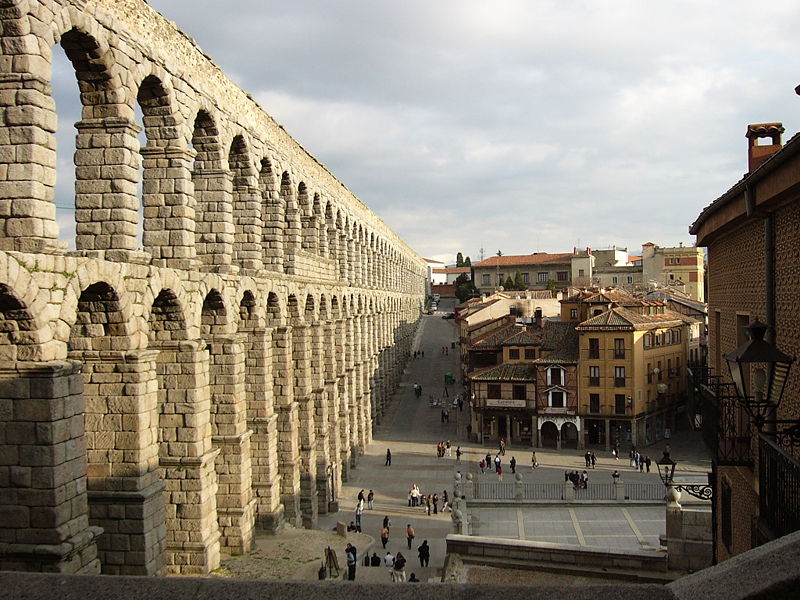
Road 71 km from Madrid by bus or car and 20 minutes by train, high speed bird. There are many reasons why you should visit the city of Toledo and why insurance revisited. Here are some of them.
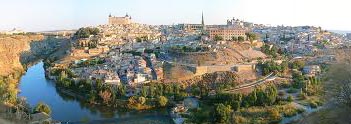
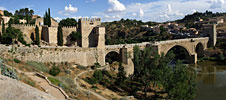
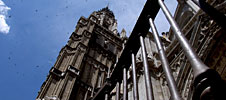
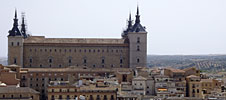
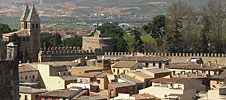

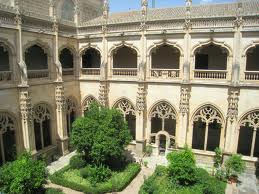
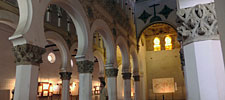
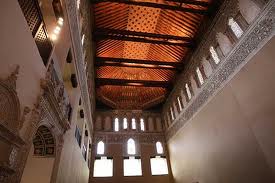
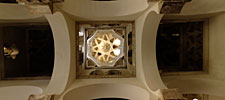
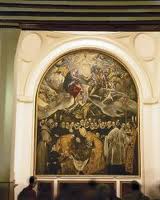
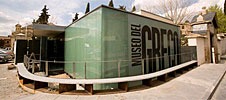
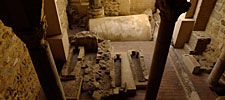
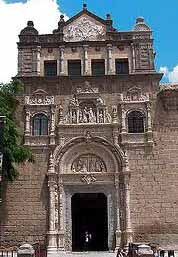

The River
The Tajo River is linked birth itself Toledo City, conditioning its layout, its form and origin. The Tajo natural wall served as the city and its population grew, therefore, of life around its waters.
City Bridges
Foremost among them two bridges, the Alcantara, installed in the same place it occupied the floating walkway that served to wade formerly Tajo. And the San Martín bridge XIII century, with five arches and two towers at both ends.A nice show to cross at night!
The Cathedral
During more than two centuries of construction, between 1226 and 1493, the cathedral has included elements from different artistic style,predominantly gothic, and the work of several architects, among them is the son of El Greco.The result is an unusual mix of styles where you can appreciate the evolution of spanish architecture and history. Stresses along with the Alcazar, the most peculiar view of the city of Toledo.
Quarterdeck
Emblem of the city of Toledo. Located on the highest point of the city. It was conceived as a fortress-castle from Hispano-Muslim era that now houses the Army Museum and the Regional Library.
City Doors
City Symbol cardinal’s kings and emperors. Highlights flanking the door Sun fourteenth century Moorish style, with elements more typical of a palace than a fortress. The door hinge, conceived as a triumphal arch with the arms of the Emperor Charles V. The Visigothic of Alarcones Cambrón and plants named after cambroneras of your surroundings, where we find the shield of Philip II and the statue of Saint Leocadia.
Zocodover Square
Located in the center of the city and former animal market, that remains its name to this day. It was market place autos, theater, bullfights and popular games.
San Juan de los Reyes
Franciscan Monastery was initially conceived as a royal pantheon to the Catholic Monarchs, a place that later will be the destination of the city of Granada. Mixed Hispano-Flemish Gothic and Moorish. Of extraordinary austerity and grandeur of volumes, adorned with large windows, arches and Gothic pinnacles.
Santa María La Blanca
The once largest synagogue, and later church, military barracks, warehouse of the Royal Treasury and other uses. Impress his quiet leafy courtyard entry, its simplicity in appearance and grandeur inside: five naves separated by pillars supporting horseshoe arches with beautiful carved capitals.
Synagogue "Tránsito"
Converted into a Christian church by the Catholic Monarchs, resting place of knights and the. It is one of the best examples of medieval carpentry XIV century Toledo, emphasizing their great Hall of Prayer and Women Gallery. Today houses the Sephardic Museum.
Cristo de la Luz
This small mosque X century is a unique example of the survival of the art of Al-Andalus. Of the ten that had the city, is the only standing before the Christian Reconquista of Alfonso VI. Excavations in 2006 and subsequent rehabilitation, was discovered in a Roman enclosure, apse Toletum Senior Roman and a Christian cemetery.
Santo Tomé Church
Church of the early fourteenth century Moorish tower notable for its masonry and brick and square. Custody inside The Burial of Count Orgaz, one of the most important works of El Greco.
New Museum of El Greco
Located in the Jewish quarter, this museum houses a significant sample part of the sixteenth and seventeenth centuries and works of culture and society of the time Toledo El Greco. Significant for being the only one in our country dedicated exclusively to the figure of the painter.
Salvador Church
Its tower is probably the oldest of the city of Toledo as the minaret of the mosque that once occupied this area was one of the first buildings Muslim after winning the Visigothic kingdom. There are still remains of this ancient mosque in the backyard of the church.
Santa Cruz Museum
Former hospital founded by Cardinal Mendoza accessed from Zocodover Square through the Arch of Blood. Museum containing works of artistic, archaeological, industrial, Toledo painting highlighting the sixteenth and seventeenth centuries. Of significant value is its facade plateresca, patio with Italian marble columns and a magnificent staircase of Covarrubias.
City Stairs
This project conducted by Jose Antonio Martinez Lapeña and Elias Torres in 2000, tries to solve the problems of accessibility to the historic center from the car park built on the Walk of Reccared, to the uptown area. The slope of the slide, where the stairs are located, is formed by the continuous accumulation of debris. They had to descend 30 meters down to the bedrock. The medieval walls were fully respected and have the entrance beneath its foundations. In order to reduce the visual and environmental impact, the building that houses the stairs was embedded in the hillside. All the work has been constructed with an ocher colored concrete, with the tone of the typical architecture of Toledo. The six flights of stairs in order to bridge the gap of 36 meters, forming a zigzag shape that adapts to the topography and prevents dizziness.